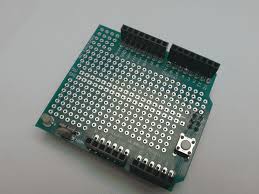As circuit design trends toward ever-increasing complexity, while all margin for error approaches zero, PCB DFM (Design for Manufacturability) is perhaps the most critical strategy you can apply to reduce errors in your design process. DFM helps engineers proactively identify the areas where design may lead to defects so that they can perform corrections on time and avoid costly rework or production delays. According to an industry report published in 2020, DFM processes are effective enough to reduce manufacturing errors by around 30%, enabling savings that helps the companies save on costs and also launch new products faster in the market.
Design for manufacturing guidelines (DFM) pertain to design specifications such as distance and trace width; and component blocades, important to ensure a project is functional but also manufacturable. For example, following minimum trace width and spacing rules allows designers to be certain that PCB fabrication equipment can accurately fabricate the design. Neglecting these elements can result in minute discrepancies, which can generate short circuits or open connections that would require rework, both of which quickly add days — if not weeks — to your production cycle. Experts say this type of manufacturing defect can present itself 15% less with proper trace spacing.
Recent moves in PCB DFM also emphasize simplifying the design to once again ease manufacturing complexity. For instance, designing a multilayer PCB with the least number of layers, or designing a single layer with lower component density can ease the manufacturing process. In addition to the savings in materials, simplified designs help prevent costly assembly mistakes from happening; a common concern as studies reveal about 25% of PCB defects arise from unnecessarily complex layouts. Thus, yield rates and production efficiency will be immediately impacted by DFM practices that lend themselves to simplicity.

In addition to locating the problem with component handling and placement, by running DFM checks much earlier in the design cycle DFM principles promote the use of components with good availability and a long lifespan to minimize redesign caused by part obsolescence because component availability is not constant but can be subject to change. This sourcing visibility links with the push for cost reduction, as studies estimate that re-designing products due to the unavailability of components can up production costs by 20%.
Another domain of weight reduction that has great impact due to DFM is the thermal management. Good thermal design (e.g., moving high-power components apart and providing sufficient ventilation) ensures that no overheating occurs, which is detrimental to a PCB lifecycle. DFM guidelines for heat dissipation as research shows that a poor thermal management can reduce the lifespan of components by 30%. Cost-effective thermal management is one area where DFM principles can help designers improve the long-term durability and reliability of the final product (important in automotive and aerospace electronics).
DFM: DFM guidelines tackle design tolerances, specifying that every aspect of a PCB layout can be easily manufactured using standard manufacturing processes. If you are attempting tight tolerances, this can be especially problematic with drilling and etching. Using DFM tolerances, designers mitigate the risk of alignment errors and defective vias. According to numbers from some PCB manufacturers, aligning designs according to the DFM guidelines can lower tolerance-related defects as much as 10%.
Designers can check their design against DFM standards using tools like a Gerber Viewer online and identify potential problems before finalizing layouts. Designers are able to visualize how a board will be made, catching errors early in the design process leading to a faster production cycle. To summarize, pcb dfm reduces errors by focusing on manufacturability, enhancing heat dissipation, and setting tolerance standards that contribute to a more fluid and dependable design-transfer-to-production phase.